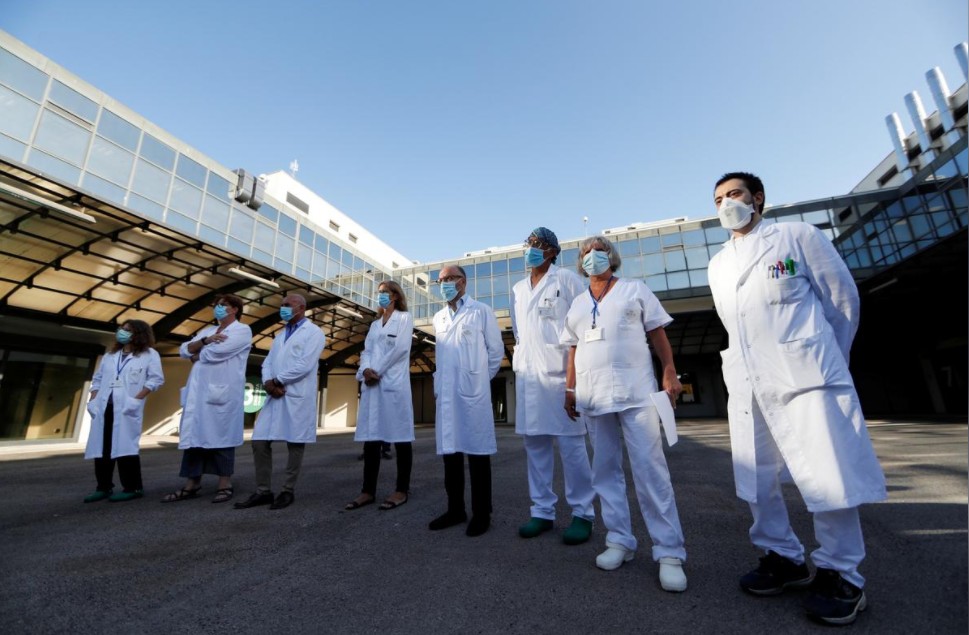
EU eyes initial COVID-19 vaccination for at least 40% of population
BRUSSELS (Reuters) - European Union nations, Britain and EU partners have agreed on a blueprint for a COVID-19 vaccination plan envisaging inoculation of at least 40% of their populations, a step that may set back the World Health Organisation’s own vaccine blueprint
The EU target for early vaccinations is twice as high as the goal set by the WHO, which is aiming to buy vaccines initially for 20% of the world’s most vulnerable people through a global procurement scheme.
The EU estimates that the share of its population in need of initial vaccination, should a shot be developed, would be at least 40%, effectively reducing the availability of possible doses for less developed countries.
There is so far no approved COVID-19 vaccine, except one authorised in Russia before large-scale trials. The supply of the vaccines that might be successful is expected to be limited for a long period as production capacities are limited.
“Adding (up) all risk groups presently known will designate probably 40% of the population, depending on the situation and demography in countries,” said the document, adopted in late July by health experts from EU member states as well as Britain, Switzerland, Norway and Balkan countries.
The document classifies as belonging to “priority groups” over 200 million of the EU population of 450 million, including people with chronic diseases, the elderly and health workers.
Healthy people working in critical public services, such as education and public transport, are also included in the priority group although an estimate for their number is not available in the EU document.
Adding this group would raise the EU’s initial vaccination target to more than 40% of the population.
The objective of the plan is to reach herd immunity for the EU population, the document says, which could be achieved with further vaccination campaigns after the 40% goal is met.
The document gives no timeline for how fast it would expect to be able to reach its target, but outlines logistics that need to be in place for a vast inoculation programme. They range from refrigerated transport to supplies of needles and setting up vaccination locations, with the possible involvement of the army and civil protection.
Europe First?
The European Commission, the EU executive arm, has repeatedly said it supports a global, inclusive approach on COVID-19 vaccines aimed at offering equitable access to everybody in the world.
However, it is implementing what may be seen as the equivalent of a “Europe First” strategy, in which the EU population is prioritised – effectively undermining the global approach.
The Commission has asked the 27 EU states not to buy vaccines through a purchasing scheme led by the WHO and to instead use exclusively an alternative EU plan which it deems faster and cheaper.
That approach could weaken the global procurement for which financial commitments are due by next week.
The Commission has said that it could offer financial support to the WHO scheme and donate vaccines acquired through the EU scheme, but with high vaccination targets the chances that the bloc may have surplus doses are shrinking.
Asked whether the EU and its states could donate vaccines only after the 20% inoculation target set by the WHO is met, a spokesman for the European Commission declined to comment.
The document is not binding on EU states and partners, who could target an even higher vaccination coverage for their populations, should vaccines become available.
The EU expects any available vaccine to be used with a double inoculation, further reducing the doses available to developing countries.
“A single dose vaccination is presently the most unlikely hypothesis and a booster-dosed vaccine the most likely assumption,” the document said.
- Αμαλιάδα: «Αν δω το παραμικρό θα την ”σκίσω” επιστημονικά», λέει ο τεχνικός σύμβουλος της Ειρήνης Μουρτζούκου
- Αμαλιάδα: «Το ψέμα θέλει μνήμη και η αλήθεια θάρρος» – Ανατροπή από μάρτυρα – «κλειδί»
- Μαγδεμβούργο: Για «κενό ασφαλείας» στη χριστουγεννιάτικη αγορά κάνει λόγο ειδικός σε θέματα τρομοκρατίας
Ακολουθήστε το in.gr στο Google News και μάθετε πρώτοι όλες τις ειδήσεις








































 Αριθμός Πιστοποίησης Μ.Η.Τ.232442
Αριθμός Πιστοποίησης Μ.Η.Τ.232442